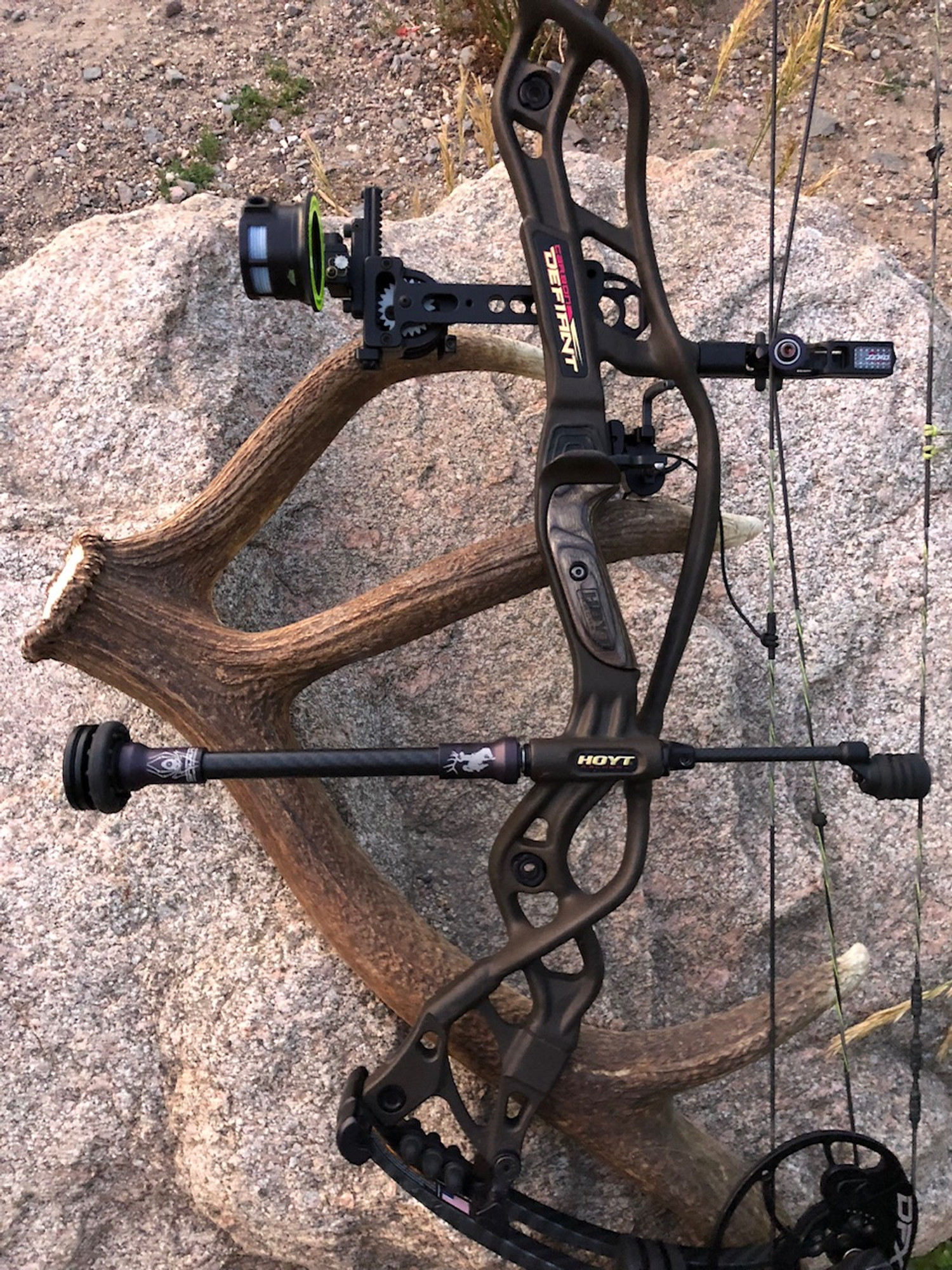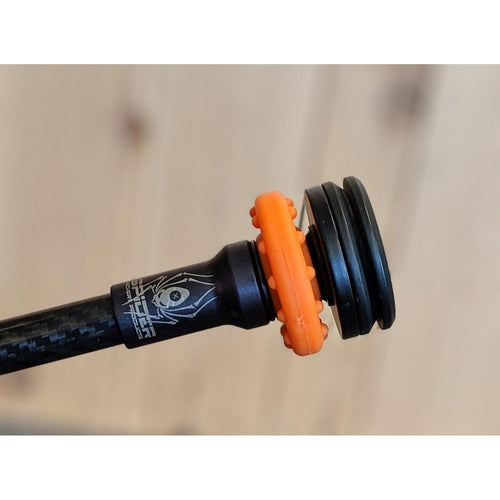Master the Art of Archery: Comprehending the Value of a Stabilizer in Your Setup
Whether one is a seasoned archer or just starting their trip, the importance of a stabilizer in their setup can not be overemphasized. By understanding the benefits of utilizing a stabilizer, considering the best factors when choosing one, and effectively installing and readjusting it, archers can boost their skills to new elevations.
The Duty of a Stabilizer in Archery
A stabilizer plays an important function in archery by boosting equilibrium and reducing resonances during the shot. When an archer draws the bowstring and launches it, there is a transfer of power that can cause the acquiesce vibrate. These vibrations can negatively impact the accuracy of the shot. Nevertheless, a stabilizer assists to counteract these vibrations by soaking up and dissipating the energy.
One of the primary benefits of a stabilizer is its capacity to boost balance. The weight of the stabilizer helps to distribute the weight equally, lowering the stress on the archer's arm and enhancing stability.
In enhancement to balance, a stabilizer additionally helps to lower torque. The weight and design of a stabilizer counteract this turning, making certain a more exact and constant shot.
Advantages of Utilizing a Stabilizer
The use of a stabilizer in archery provides countless benefits that improve an archer's efficiency and overall shooting experience. By soaking up and dampening these resonances, the stabilizer enhances the stability of the bow, permitting for even more precise and constant shots.
Second of all, a stabilizer helps to stabilize the bow by including weight to the front end. This weight circulation combats the natural propensity of the bow to tip onward upon launch, decreasing the amount of movement and improving the archer's capability to maintain goal on target.

Lastly, a stabilizer can additionally serve as a shock absorber, reducing the shock and recoil experienced upon launch. This not just boosts the convenience of shooting however additionally reduces the threat of injury or strain on the archer's body.
Exactly How a Stabilizer Improves Accuracy
Enhancing the precision of an archer's shots, a stabilizer plays a vital duty in boosting general efficiency. archery stabilizer. By adding stability to the bow, a stabilizer assists reduce the unwanted motion and resonance that can take place during a shot. This reduction in motion enables the archer to preserve a consistent objective, resulting in more precise and constant shots

In addition, a stabilizer aids to wet resonances that happen upon release. These resonances can trigger the bow to shake, influencing the arrowhead's trajectory and precision. By absorbing and dissipating these resonances, a stabilizer helps to preserve the bow's stability and guarantee a exact and smooth shot.
Furthermore, a stabilizer can likewise assist in stabilizing the weight distribution of the bow (archery stabilizer). By including weight to the front of the bow, a stabilizer assists to stabilize the weight of devices, such as quivers or views, which may be affixed to the bow. This well balanced weight circulation aids the archer keep a regulated and consistent shooting position, resulting in enhanced accuracy
Elements to Consider When Choosing a Stabilizer
When choosing a stabilizer for your bow, it is essential to think about a number of factors that will add to its total efficiency and suitability for your individual shooting design. The initial variable to think about is the size of the stabilizer. Stabilizers come in different sizes, ranging from brief to long. Longer stabilizers typically give much more stability and balance, but they can additionally be larger and a lot more hard blog to maneuver. Shorter stabilizers, on the other hand, use better maneuverability however might sacrifice some stability.
An additional element to think about is the weight of the stabilizer. The weight of the stabilizer can influence the balance of your bow. A much heavier stabilizer can help to reduce resonances and boost security, leading to a steadier shot. Nonetheless, a lighter stabilizer may be preferred by shooters who prioritize ability to move and speed.
Furthermore, it is necessary to take into consideration the style and building and construction of the stabilizer. Some stabilizers have adjustable features, such as adjustable length or flexible weights, which enable you to personalize the stabilizer to your specific demands. The materials used in the construction of the stabilizer can also impact its effectiveness. Carbon fiber stabilizers are light-weight and sturdy, while light weight aluminum stabilizers offer an equilibrium he said in between weight and rigidness.
Finally, it is vital to consider your shooting style and choices. Different stabilizers might work far better for sure shooting styles, such as target capturing or hunting. It is recommended to consult with knowledgeable archers or specialists to identify which stabilizer will certainly ideal suit your private demands. Overall, thinking about these elements will certainly aid guarantee that you choose a stabilizer that enhances your shooting experience and enhances your precision.
Tips for Correctly Installing and Readjusting a Stabilizer
Longer stabilizers offer even more security yet can be less maneuverable, while shorter stabilizers offer raised maneuverability but may sacrifice stability. As soon as you have actually picked the ideal size, connect the stabilizer to the bow utilizing the provided mounting equipment. Ensure that the stabilizer is safely secured and aligned with the bow's riser.
After setting up the stabilizer, it is required to make changes to accomplish the desired equilibrium and shot consistency. Start by changing the weight distribution along the stabilizer. Furthermore, think about adjusting the angle of the stabilizer to adjust the shot.

Final Thought
In conclusion, a stabilizer plays an important duty in archery by improving accuracy and decreasing bow torque. By adding weight to the bow, it assists to balance and support the shot. When selecting a stabilizer, variables such as material, weight, and length must be thought about to fulfill specific requirements. Appropriate setup and adjustment of the stabilizer are additionally vital for optimal efficiency. Grasping using a stabilizer can greatly boost the archer's skill and precision.
Furthermore, a stabilizer can likewise help in stabilizing the weight distribution of the bow. By adding weight to the front of the bow, a stabilizer aids to stabilize the weight of devices, such as views or quivers, which may be attached to the bow. Some stabilizers have adjustable functions, such as flexible length or flexible weights, which allow you to personalize the stabilizer to your specific requirements. Carbon fiber stabilizers are sturdy and light-weight, while aluminum stabilizers use a balance between weight and strength.
Longer stabilizers supply even more security however can be less manoeuvrable, while shorter stabilizers offer raised ability to move but may give up security.
Comments on “Improve Your Accuracy: The Duty of Archery Stabilizers”